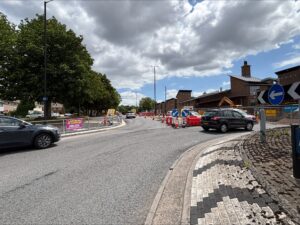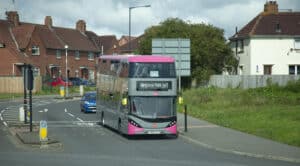
£3.5m boost for active travel across the region
£3.5m boost for active travel across the region
The West of England is set to invest a further £3.5 million in walking, cycling, and wheeling projects across the region.
Top line: Interventions addressing a large number of people who are at a small risk may be more effective in reducing injury and illness than interventions addressing small numbers at high risk. This is an important consideration in areas of public policy such as road safety given finite resources.
Of particular relevance to both transport planning and public health are injuries due to traffic collisions. Worldwide, traffic collisions are one of the leading causes of death among youth and young adults. In an important contribution to public policy by Rose it has been showed that a preventive measure that brings large benefits to the community may offer little to each participating person. For example, to prevent one death due to a motor vehicle crashes, many hundreds of people must wear seat belts. Conversely, an intervention which brings much benefit to an individual may have a small impact in the population. Building from this prevention paradox, the primary concept of Rose’s strategy is that the majority of cases of injury and illness, such as from traffic collisions, do not occur in individuals at high risk. Thus, “a large number of people exposed to a small risk may generate many more cases than a small number exposed to a high risk”. 1
In transport research, the volume and speed of motor vehicle traffic can be considered two of the fundamental causes of collisions, for all road users. Exposure to moving vehicles is a fundamental cause of road traffic deaths and injuries. As such, a global reduction in the amount of motor vehicle kilometres driven would result in a reduction of the likelihood of collisions for all road users, a left shift in the risk of road death and injury (Figure).2

For all road users, a reduction in motor traffic volume contributes to a lower risk of injury and death. Significant public health benefits could be achieved through macro-level interventions that influence the level of exposure to motor traffic volumes for all road users, for example, land use and transport policies that encourage using safer transport modes (e.g. public transport) and area-wide 20mph schemes covering whole urban areas, among others. Challenges to such population strategies include global economic forces lead by major car and oil companies in influencing road collision research and debates.
1 Rose, G. 1992 The strategy of preventive medicine, Oxford: Oxford University Press.
2 Fuller, D., Morency, P. 2013 A population approach to transportation planning: reducing exposure to motor-vehicles, Journal of Environmental and Public Health, http://dx.doi.org/10.1155/2013/916460

The West of England is set to invest a further £3.5 million in walking, cycling, and wheeling projects across the region.

Work to rebuild the southbound section of Passage Road (A4018), between Crow Lane roundabout and Charlton Road, is taking place from 14 July to 1 August 2025.

Plans to extend the metrobus m1 service in the south of the city have been given the go-ahead by members of the Transport and Connectivity Committee when they met on Thursday 10 July.
A major scheme to improve the condition and safety of roads in Congresbury begins on Monday 14 July.
Work to cut back Willow trees on Herluin Way in Weston-super-Mare begins on Tuesday 15 July.